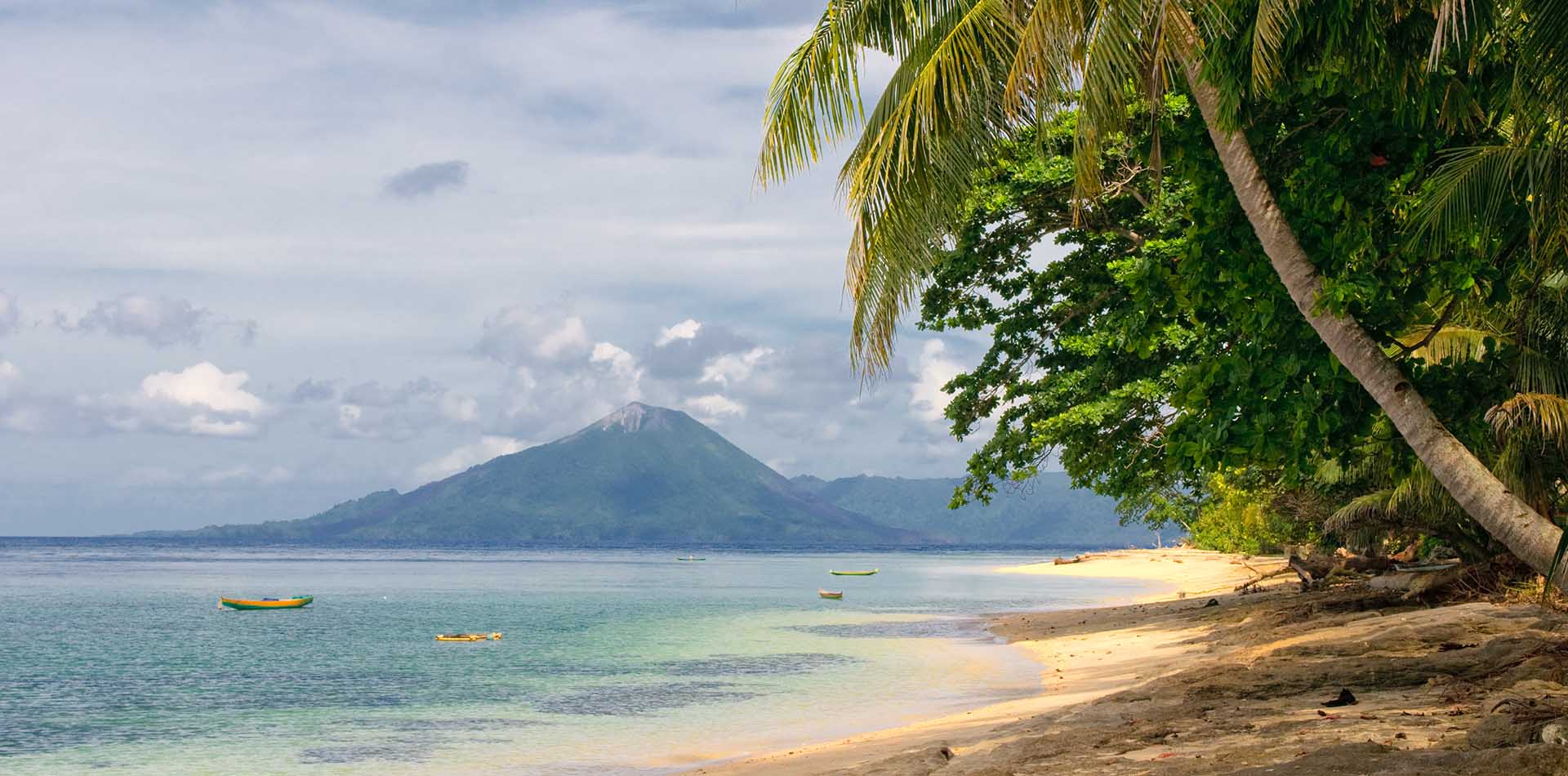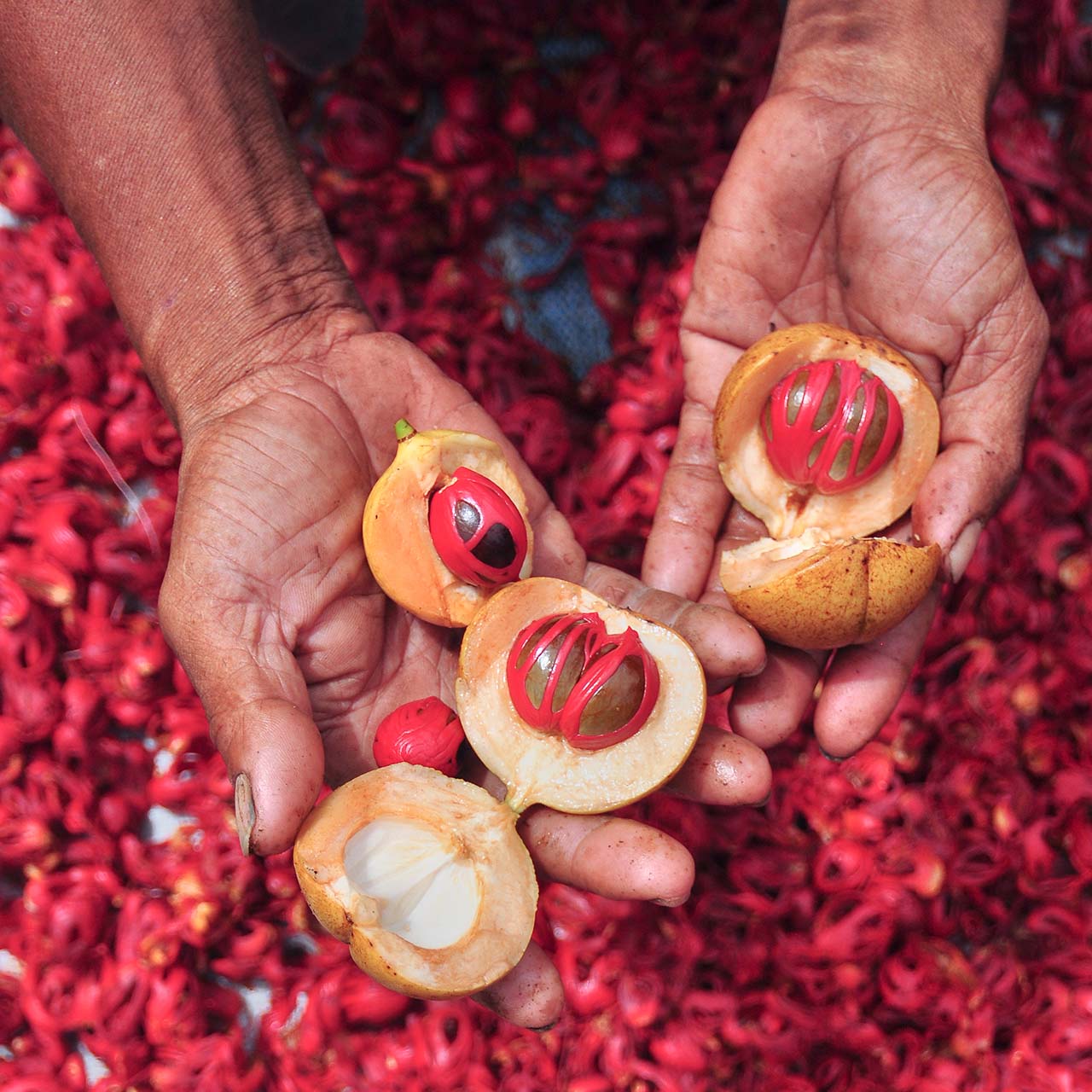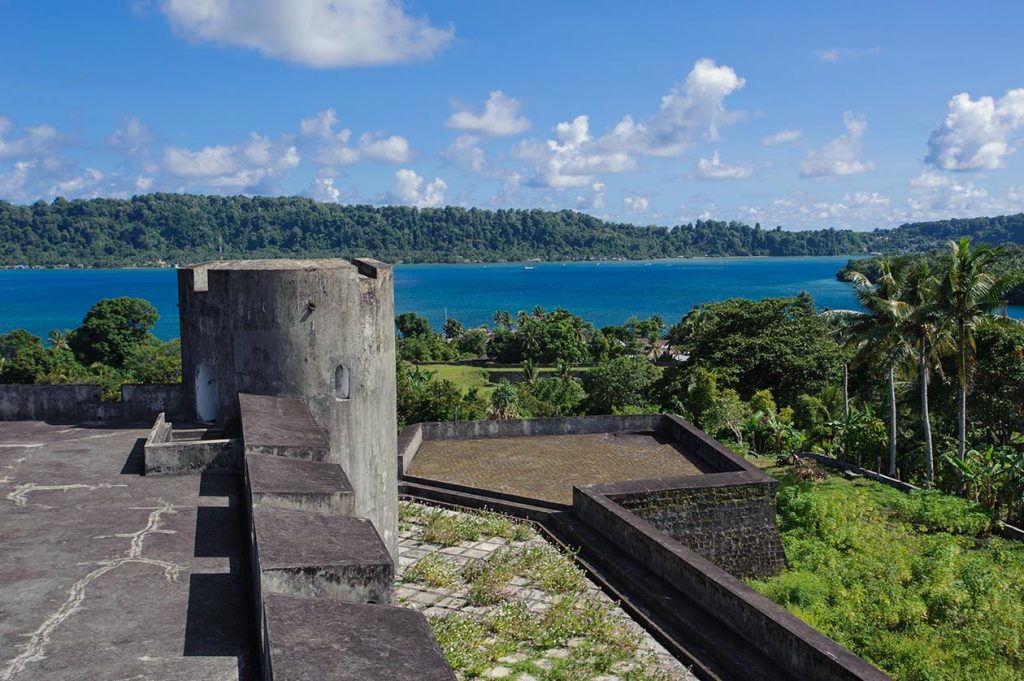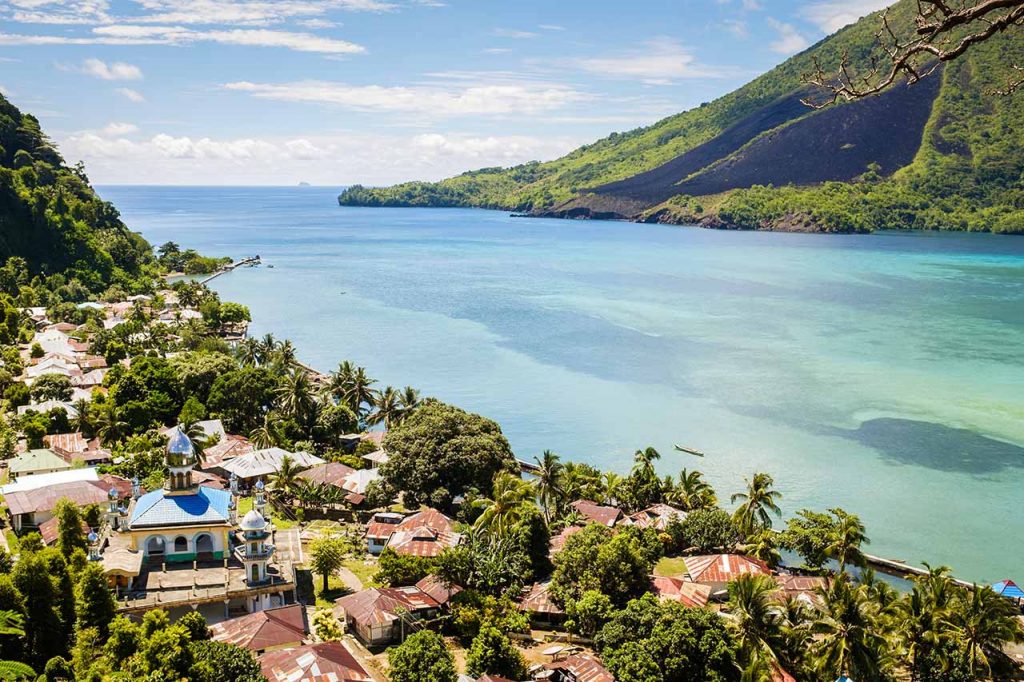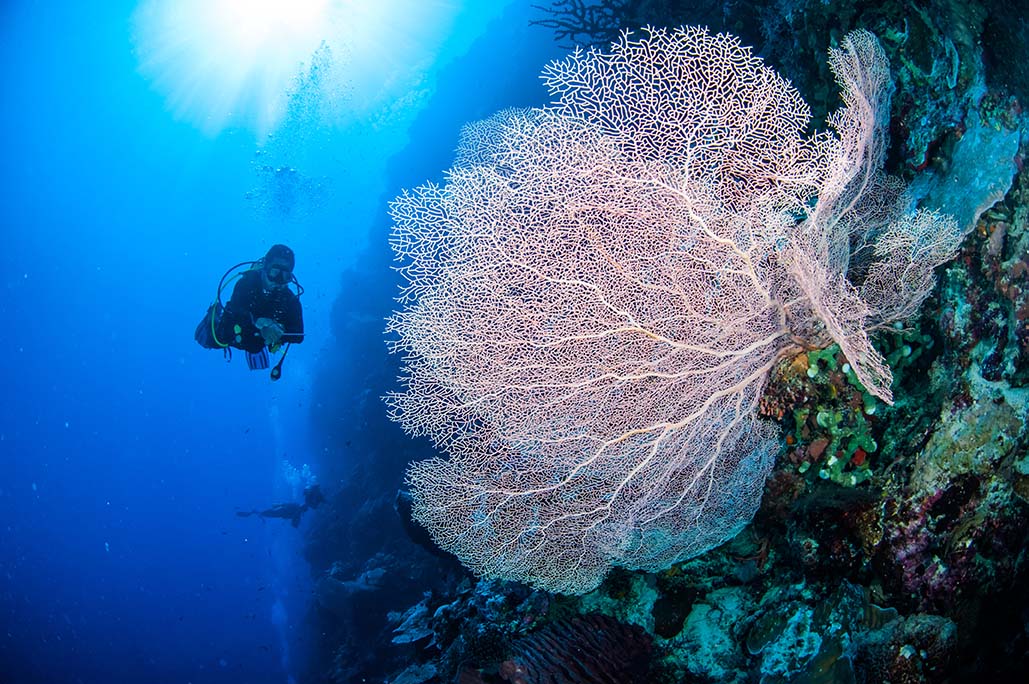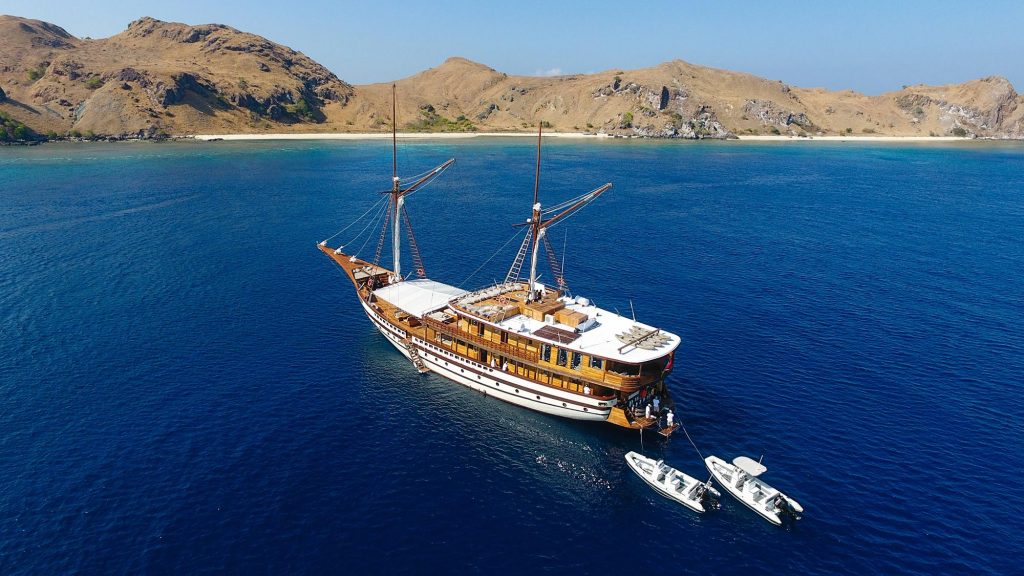The Banda Islands
The Spice Islands are the flavour of adventure
The Banda Islands are part of an area romantically known as the Spice Islands and were a much-disputed region during the colonial hiatus of the 16th and 17th centuries. The spice related nickname was well deserved and their historical worth was assured as the only region in the world where valuable nutmeg, cloves and mace were found in abundance.
The Portuguese, the Dutch and the English all vied for superiority in these faraway waters but as these commodities began to be cultivated in other places this hotspot faded away into insignificance. Colonial ambitions sprouted elsewhere, history marched on and these spectacular islands were all but forgotten about until now.
The zesty zing of this remote region has recently been resurrected as a destination for only the most intrepid travellers. Literally bursting with opportunities for exploration this sparsely populated location has turquoise oceans thronging with marine life, deserted beaches, friendly locals and the charming remnants of architecture from a bygone age.
In the 21st century, the Banda Islands spice up any trip to Indonesia with their unique flavour.
Where are the Banda Islands?
The Banda Islands are a small cluster of about ten islands in the Banda Sea about 2,000km east of Java. These form part of the Maluku (Moluccas) Province of Indonesia and the main city is called Ambon (on an island of the same name) and it has a small airport which is the main port of entry and therefore the jumping off point for most adventures here.
The central islands form a picture-perfect crescent around the volcano, Gunung Api and were at the heart of the colonial interest. These consist of Pulau Neira and Pulau Banda Besar or the great nutmeg island. The Moluccas, of which the Banda Islands form the southernmost part, is a transition zone between Asian and Australian fauna and flora, and the animal life and vegetation of the islands include many species that are unique to the region.
History
The Dutch ruled the Banda Islands and presided over the spice trade there for nearly 200 years fighting off challenges from the British and the Spanish. The Portuguese had been marauding around the area since 1512 and earlier, long before the Europeans knew anything of it, the region had been part of a more ancient spice trade.
The importance of the Moluccas began to diminish when the cunning British successfully transplanted spice trees to Sri Lanka, Grenada and Singapore. Therefore considerably devaluing the nutmeg, cloves and other commodities that were only produced here.
Subsequently, after World War II, the whole colonial system started to break down. This resulted in Indonesia declaring its independence and the Moluccas electing to join the new republic. The Dutch, however, accepted neither Indonesia’s sovereignty nor its inclusion of the eastern islands. Rather, in an attempt to re-establish their authority in the region, the Dutch incorporated the Moluccas into the temporary autonomous state of East Indonesia. In 1949, the Dutch officially granted independence to Indonesia and the Moluccas.
Places of interest in the Banda Islands
As a result of European colonial rule spectacular examples of period, architecture abounds on the islands including numerous impressive houses built by Dutch spice planters, churches and forts. Banda Neira is probably one of the most fruitful spots for this and you can visit Fort Belgica, the historic church and the Governors House.
Moreover, you can take trishaws to Fort Nassau and the local market where you can buy freshly dried Banda nutmegs, real cinnamon, handmade nutmeg plucking baskets and local delicacies made from the spices grown on the island.
Run Island also has a real colonial feel and a charming traditional village inhabited by friendly locals which is well worth a visit. The Dutch traded this for the island Manhattan with the British in 1677 and the remains of the fort still exists today.
Scuba Diving in the Banda Islands
Scuba diving in the Banda Sea is the stuff that dreams are made of. The effort to get to this far-flung location is rewarded ten-fold with unspoilt coral reefs, giant pelagics and mind-blowing macro life. Diving is usually easy, with mild currents, good visibility and calm waters, however, some of the sites are subject to stronger currents making them suitable for the more experienced diver.
Multitudes of huge dogtooth tuna throng energetically through these waters and you’ll encounter schools of enormous fusiliers and thousands of red tooth triggerfish. Moreover, on the other end of the size scale, there are prolific mandarin fish and the rather special native Ambon scorpionfish.
Furthermore, liveaboards in the region often report sightings of spinner dolphins, orcas, and various other whale species. One thing for certain is that you’ll see plenty of big fish as well as no shortage of colourful reef life, enormous fans and stunning sponges.
How to get to the Banda Islands
Most people visiting the Banda Islands fly into an airport on the island of Ambon and take a boat from here.
The best way to see the Banda Islands
As one of the last outposts on the Indonesian frontier, the best way to explore the remote southern Maluku region is on a luxury liveaboard. Onboard a luxury yacht, you have the freedom to explore the deserted beaches and coves which characterise this region as well as seeing the main historical sights.
And what better way than as a passenger on Prana, the most luxurious Phinisi sailing the Banda Sea. In the true historical spirit of this region, this is a teak and ironwood boat which is traditionally crafted by master seafarers. This beautiful boat has 4 large decks and 9 beautiful cabins with ensuites as well as a cinema under the stars, a spa, watersports and a fine dining salon
For more information, contact the Prana team at info@pranabyatzaro.com or +34 971 188 894

